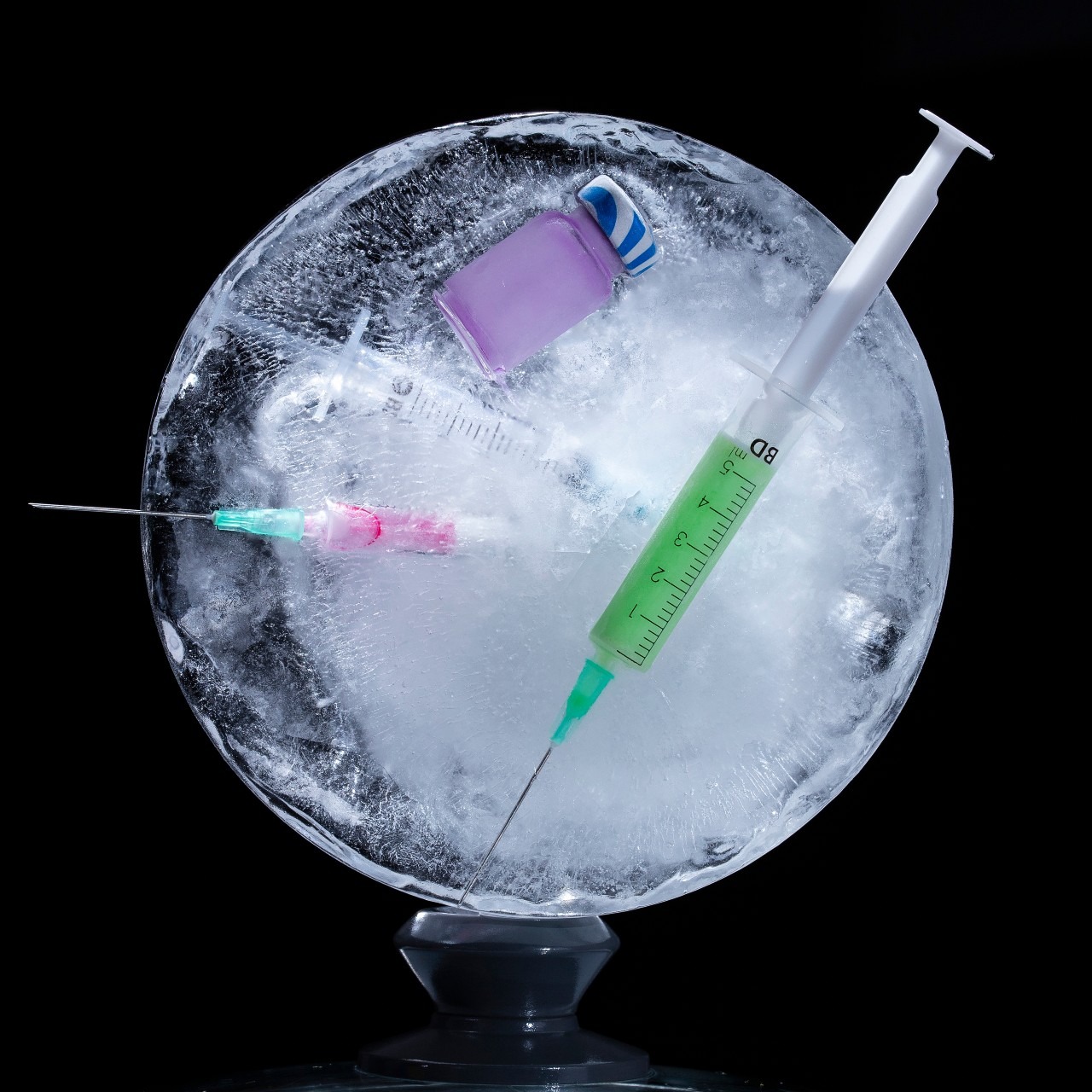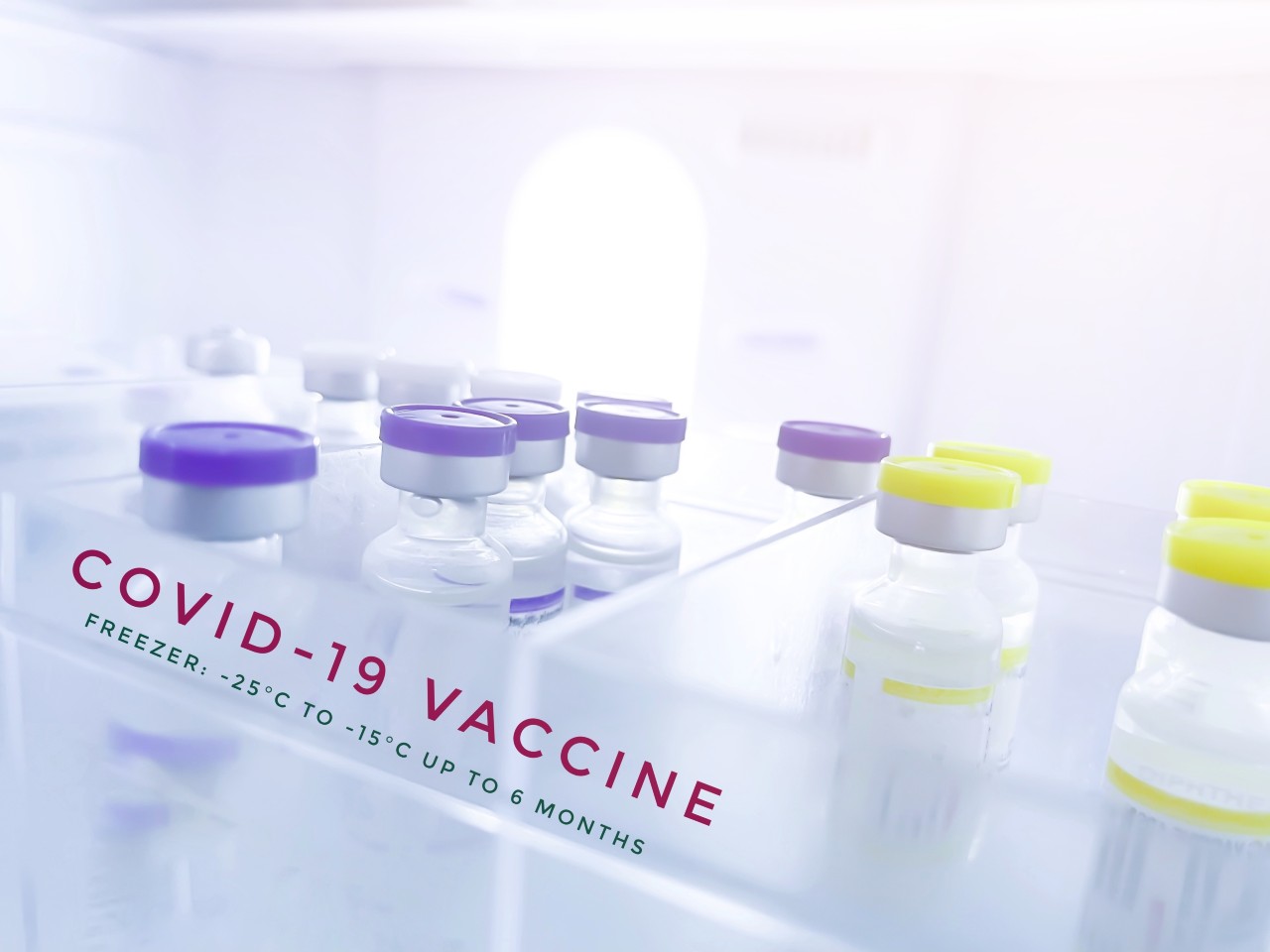
The Covid-19 pandemic has highlighted the pharma sector’s dependence on the cold chain for vaccine delivery. Hundreds of thousands of cold storage devices are being used to ship vaccines worldwide, while local ‘fridge farms’ have been rolled out to house deliveries. But is there another way? Lynette Eyb speaks to David Hipkiss, CEO of Enesi Pharma, and looks at the development of delivery technologies that may one day help reduce vaccine waste and refine – even revolutionise – cold storage in a rapidly warming world.
Covid-19 has obliterated any concept of the status quo. It’s laid bare inadequacies across our healthcare and economic models, and smashed preconceived notions of best practices and gold standards.
Nowhere are these cracks more evident than in supply chains, which have struggled to respond with the agility needed during such a global crisis. As vaccination efforts accelerate to stem further waves of infections, question marks hang over the future of the entire cold chain.
How can our current system keep pace with temperature-dependent RNA technology as the world moves beyond Covid-19? And as the importance of cutting global greenhouse gas emissions becomes ever more painfully clear, do we really want to be shipping medicines around the world in energy-sucking refrigeration devices?
For the moment, necessity is the mother of invention. Drug manufacturer Pfizer has become not only a producer of mRNA vaccine technology, but also a distributor of cold storage units. So-called ‘fridge farms’ have popped up in hospital car parks and warehouses worldwide to store life-saving vaccines as they await administration.
Companies like Italy’s Desmon have risen to the challenge, prototyping deep freeze units that can maintain temperatures for up to 30 hours without electricity, while at the same time storing as many as 180,000 doses. But this is part of what David Hipkiss, CEO of Enesi Pharma, calls a “shorter-term game”.
“At the moment it’s a matter of expediency,” he says. “The cold chain challenge is a function of the innate limitation of the formulation of the drug. The fundamental issue is the formulation.
“If you want to change the game for RNA and go after the big changes, such as the 20% wastage in every multidose vial or the elimination of the cold chain, you don’t address it through the device, you have to address it through the formulation.”
And that’s where innovations like Enesi’s come in. The company’s ImplaVax technology combines unit solid-dose formulations with needle-free delivery, keeping vaccines stable at temperatures of up to 40ºC.
Hipkiss says solid doses have a range of benefits, not least potency and efficacy, as well as sustainability. “Because our materials are solid precision engineered, we do not have to reconstitute prior to administration, so we don’t have the extra packaging and we don’t have any wasted doses – every dose made is delivered,” he says.
The Enesi technology, which is being used for Imperial College London’s SARS-CoV2 RNA vaccine candidate, is transferable across a range of disease states, paving the way for vaccines and other medicines to move past syringe and vial.
New vaccine delivery developments for a cold chain-free world
This model of vaccine delivery requires new ways of thinking. Whereas vial-based doses can be developed and manufactured independently of the syringe, the same does not apply to doses manufactured for a cold chain-free world.
“It’s a combination of both formulation and delivery device technologies in their own right – they’re symbiotic and they work together,” says Hipkiss. “We’ve shown that the technology platform is targeted indication agnostic. We have been able to demonstrate the utility of the technology across the broadest possible platform.”
Hipkiss believes his company is on the cusp of facilitating the holy grail of vaccine manufacture. Enesi’s technology is “high-potency, thermally stable outside the cold chain in a non-vial, non-syringe, non-reconstitution fashion [and] capable of being delivered in seconds by anyone anywhere in the world”, he notes.
“If we link all that up and we make it work – that’s the Apple iPhone moment. If you can do it with that bit of RNA, you can do it with any bit of RNA.”
While cold chains will endure due to the limitations of some replacement technologies, Hipkiss foresees a drastic reduction in the current dependency. “I think there will always be a place for the cold chain, but can I conceive of a cold chain-free vaccine world? I think the answer is yes.
“When will that happen? I think we need to get this first one into a non-needle and syringe format. Once one happens, I think there will be a domino effect – it’s like the first flat screen TV, the first smartphone – someone always has to go first.”
Professor Robin Shattock, head of Mucosal Infection and Immunity in the Department of Infectious Disease at Imperial College London, hopes his formulation will be among the first to completely cut out the cold chain.
“There remain a number of challenges to address to be able to provide broad coverage against the virus throughout the world population, including in terms of storing, shipping and administering a vaccine at such an unprecedented scale,” he says.
“As we make good progress towards evaluating the efficacy of our vaccine, it is critical that in parallel we explore ways to potentially address those challenges, particularly in terms of minimising and ideally eliminating cold chain supply, and the use of needles and syringes, which could be an important barrier to rapid deployment of vaccination efforts globally.”
Hipkiss says that after the devastation of Covid-19, vaccines will be priced on their true value. “It’s true to say that infectious diseases and vaccines were a bit like the ugly sister of the pharmaceutical world until 12 months ago,” he says. “Now, people are seeing their value and companies are piling in.”
Transformative technology for vaccine delivery
Technological developments seen during Covid-19 will further accelerate the move away from cold chains once they are applied to other disease states. “Modern biology has overtaken the norms very quickly,” Hipkiss says. “The RNA genie is out of the bottle and they will begin to apply that technology proactively to disease states that are already endemic.”
In addition to flu and Covid-19 vaccines – possibly as a combined annual single-dose regimen – the focus of RNA technology will move back to oncology and personalised medicine.
Hipkiss says that Imperial College is just one of the “far-sighted” companies and research outfits working with Enesi to develop solid dose medicines. But Enesi is not alone in exploring technologies that could consign cold chain-dependent vaccines to history.
Portland-based start-up StoneStable is looking at the viability of coating viruses in silica, which would dissolve in the bloodstream.
“On the molecular level, we’re working at building a kind of ‘nanofridge’ around a drug particle to prevent it from becoming inactive,” StoneStable founder Professor Ken Stedman told the journal Pharmacy & Therapeutics in 2018.
“The pharmaceutical company would integrate these particles, our proprietary technology, into its existing drug-manufacturing process. This would remove refrigeration from the equation and allow the vaccine to survive at room temperature.”

Meanwhile, Michigan-based Esperovax has an mRNA pill it hopes will eventually allow self-administration of vaccines, though questions remain over the potency and long-term efficacy of oral vaccines.
Esperovax is one of four companies benefiting from US government Biomedical Advanced Research and Development Authority (BARDA) funding to explore skin and pill-based Covid-19 vaccine technologies.
In Boston, Vaxess Technologies has a vaccine patch – based on silkworm fibre technology – that’s being developed for both Covid-19 and influenza. The University of Connecticut and California’s Verndari, meanwhile, are also working on so-called ‘smart patches’ based on microneedle technology.
Outside the US, teams at Tohoku University in Japan and Swansea University in Wales are also developing skin-based vaccine devices.
In Swansea, project lead Dr Sanjiv Sharma says going down the patch route could serve a dual purpose. “The primary goal of this project is to create a prototype of a smart vaccine delivery device that can not only deliver the Covid-19 vaccine transdermally, but also monitor biomarkers in the skin in a minimally invasive way, offering real-time information on the efficacy of the vaccination.” Sharma says such technology could transform the way clinical trials are conducted.
A step away from cold chain reliance
However, it’s not just vaccines, but also lab work that’s moving away from the cold chain. EKF Diagnostics’ PrimeStore MTM device stabilises and preserves sample RNA for up to seven days at ambient temperatures, allowing it to be transported and processed outside of containment.
The device has come into its own during the pandemic, taking pressure off labs that do not have the capacity to refrigerate large volumes of Covid-19 test samples onsite. It also reduces time and cost constraints for transportation because samples can be sent via the postal system rather than requiring specialist couriers.
“Covid-19 has demonstrated just how much healthcare relies on the cold chain to carry out its everyday business,” says Rebekah Stibbs, product manager for the PrimeStore MTM. “I think it shone a light on the everyday demands the medical sector faces that the public had not appreciated previously.”
Stibbs predicts the device will play a key role in the future of diagnostics as home sample collection kits become more widely used. She agrees with Hipkiss that there will always be cold chain requirements for some products and services, but says there has been an awakening in terms of innovation.
“Covid-19 has highlighted the need to move quickly and easily when fighting a global emergency,” she says. “Anything that speeds up the process must be seen as a positive, and removing the reliance on an expensive and complex part of the sampling process must surely be seen as a step in the right direction.”
Hipkiss agrees that Covid-19 has awakened the world to the fallibility of the cold chain. “People, countries and systems have been forced to look at vaccine manufacture and distribution in a way they haven’t done before or – perhaps more correctly – they’ve chosen to ignore,” he says.
“Plenty of people on our side of the bargain have been banging on about this for a long time now, but saying ‘I told you so’ doesn’t get you anywhere. What we’re focused on is saying ‘let’s look at doing it this way rather than the way we’ve always done it’. If you always do what you’ve always done, you’re going to end up back in exactly the same place.”
This article first appeared in Medical Device Developments Vol. 1 2021. The full publication can be viewed online here.






